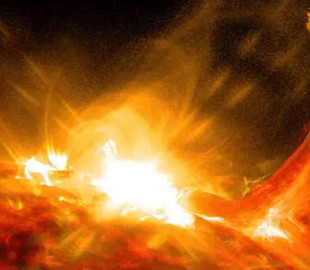
Artificial intelligence is opening up new opportunities for predicting powerful solar storms, allowing humanity to prepare in advance for the possible consequences of the impact of coronal mass ejections (CMEs) on Earth.
The Sun, although seemingly unchanging, is a dynamic ball of plasma, where magnetic processes can lead to powerful solar flares and plasma ejections into space. Coronal mass ejections — are massive plasma clouds formed as a result of changes in the Sun's magnetic field, and they can reach Earth in a few days. As scientists point out, «CMEs can travel at speeds from a few hundred to a few thousand kilometers per second, sometimes reaching Earth in a few days if their trajectory is pointed in our direction».
The interaction of CMEs with the Earth's magnetosphere can cause geomagnetic storms, which can disrupt satellite communications, power grids, and GPS systems. They can also trigger auroras, creating spectacular light shows in polar regions. One of the main challenges for astronomers is accurately predicting the timing and power of solar flares, as their unpredictability makes it difficult to protect critical infrastructure.
A recent study led by Sabrina Guastavino from the University of Genoa has demonstrated the potential of artificial intelligence in analyzing solar activity. Machine learning algorithms were trained on years of solar flare data, allowing them to detect hidden patterns in the Sun's magnetic processes.
«The prediction revealed unprecedented forecast accuracy with a significant reduction in uncertainty relative to traditional methods», — the study authors say.
One of the key tests of the new technology came during the May 2024 event, when a powerful X8.7-class flare occurred in the active solar region AR13664. Using AI, scientists were able to predict the appearance of this flare, as well as estimate the speed and travel time of the CME to Earth. The results confirmed the accuracy of the predictions, opening up new opportunities for early warning of space storms.
The application of artificial intelligence to solar physics has significant practical impact.
«Grid outages, communication problems, and satellites can be a major drawback when CMEs hit Earth, so applying an AI machine learning toolkit to predict solar activity looks like an exciting advance», — the authors of the study note.
Timely forecasting of such events will allow governments, aviation companies and satellite system operators to take measures to reduce risks.
Developing methods for predicting solar activity is an important step in ensuring the stability of the Earth's critical infrastructure. The use of machine learning algorithms allows for a more accurate assessment of the danger of space weather, which is of particular importance in the context of the growing dependence of humanity on technology. In addition, this opens up prospects for more accurate prediction of the appearance of auroras, which will be an interesting aspect for amateur astronomers and skywatchers.

